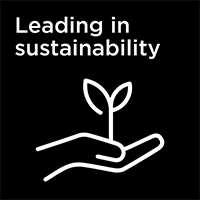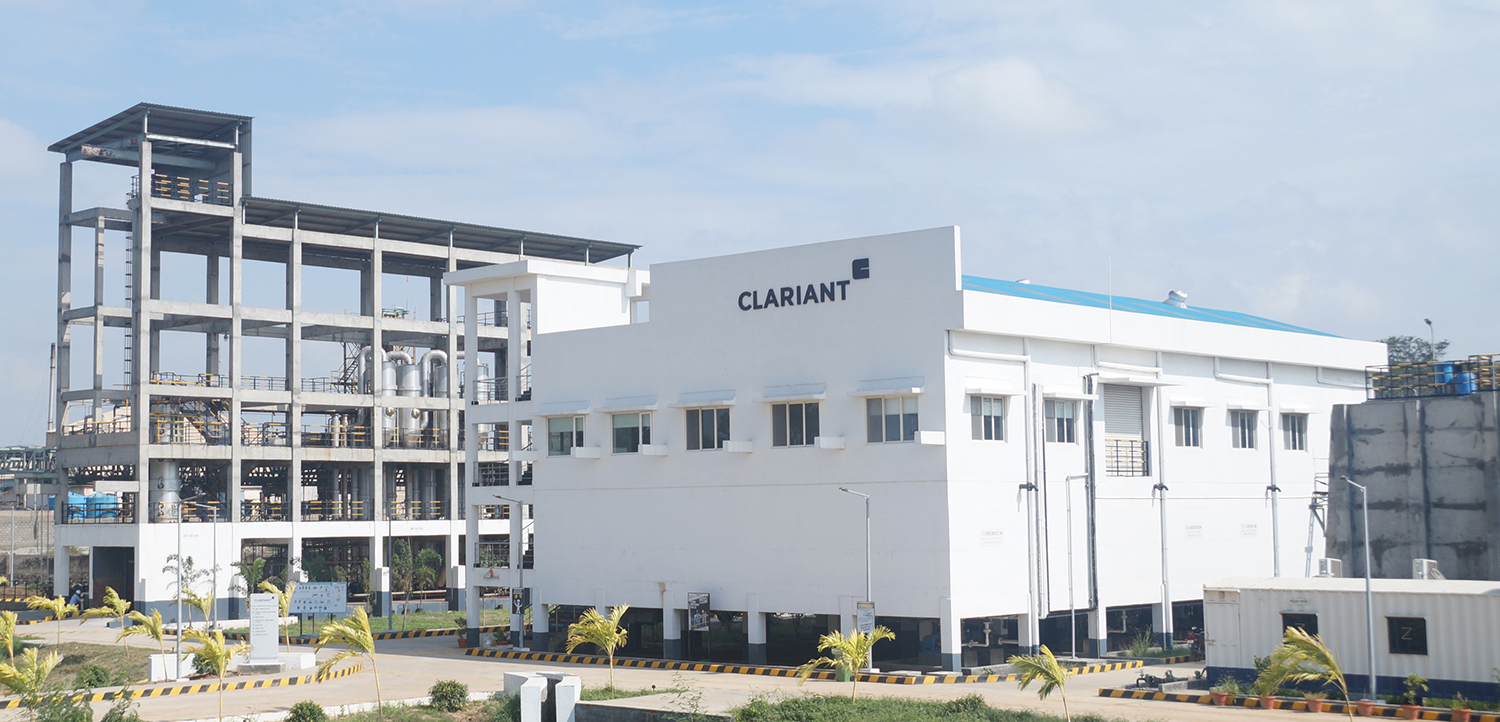The transition to greening energy in Clariant’s operations

Delivering on Clariant's purpose »Greater chemistry - between people and planet.«
This story is an example of how Clariant delivers on its purpose-led strategy.
Currently, global energy-related greenhouse gas (GHG) emissions account for around 50% of total emissions, mainly deriving from fossil fuel combustion for electricity generation, heat supply, cooling, and transport. Six years on from the Paris Agreement, Clariant plays its full part in global efforts to tackle climate change and was among the first specialty chemicals companies to set GHG reduction targets. Clariant’s commitments partly focus on the GHG Protocol’s emissions in Scope 1, which come directly from our operations, and in Scope 2, from the energy we buy to run our operations. For both scopes respectively, Clariant set a target to reduce absolute emissions by 40% by 2030, compared to 2019 levels.
Meet Dieter Regnat, Program Manager Sustainable Operations at Clariant, who discusses Clariant’s initiatives to use lower- and zero-carbon energy sources, with the aim to reach Clariant’s 2030 targets, validated by the Science Based Targets initiative (SBTi).
In line with Clariant’s Scope 1 and 2 target, should energy efficiency be pursued to reduce the emissions derived directly from our operations?
Yes, absolutely. At Clariant, energy efficiency measures have the highest priority. Reducing energy consumption in our operations not only reduces GHG emissions but also has financial benefits. This has become even more urgent with the energy crisis and sky-high prices we have been experiencing in the past year. However, it does not only benefit us. Energy efficiency improvements in our own operations also benefit our customers and their industries improving the product carbon footprint (PCF) of Clariant’s products.
Scope 1
Scope 2
Direct emissions through own activities Indirect emissions related to energy purchased from third parties
- Combustion of fuels, including natural gas, coal, diesel, and oil
- Chemical processes generating greenhouse gases, such as CO2, N2O, and CH4
- Electricity
- Steam or hot water
- Cooling
How does Clariant work towards net-zero emissions in its operations?
Energy efficiency measures alone will not lead to net-zero emissions, they will not even be sufficient to reach the 2030 GHG targets. Therefore, they need to be combined with transformational projects. This means replacing fossil-based fuels, most importantly coal, but also oils, diesel and natural gas, by renewable energy sources. These types of "green" energy offer an opportunity for a cleaner future and are increasingly in demand, but they also present unique challenges.
Can you give an example of the opportunities and challenges in renewable energy sources?
Let’s take the example of biofuel where you can find a big variety. We could say that the use of this fuel is climate neutral because the carbon that is released during burning was just recently captured from the atmosphere. Examples include wood, wood residues, energy crops, agricultural residues, and organic waste from industry and households. However, the use of biofuels alone is not enough to provide a sustainable energy solution. Firstly, we must ensure that the biomass is burned in a clean way. Secondly, for biofuels derived from wood waste, we must be ensured that the production of the biofuel does not lead to deforestation. According to the United Nations Framework Convention on Climate Change (UNFCCC) secretariat, fuel wood removal is responsible for 5% of deforestation . Furthermore, the use of biofuels must not compete with food production.
At our site in Bonthapally, India, we have replaced the coal firing of the boiler with one using biomass pellets derived from agricultural waste, such as straw husks from various fruits and small amounts of wood waste guaranteed by the supplier. The replacement of coal with biomass in Bonthapally alone enables the site and Clariant to save 10,000 tons of CO2 emissions per year.
Another great example is how our colleagues in Jianping, China, have been able to use the sun instead of coal-fired dryers to dry the bentonite. We were hopeful that with the sun we would be able to dry some of the water off, but they’ve optimized the drying process to the point where we did not use any coal for a month early last summer. Overall, we were able to reduce fossil-based drying by 22,000 tons of CO2 emissions in 2022.
»At Clariant, energy efficiency measures have the highest priority. Reducing energy consumption in our operations not only reduces GHG emissions but also has financial benefits.«
Dieter Regnat, Program Manager Sustainable Operations

Moving on to Clariant’s Scope 2 – what projects are being implemented to reduce indirect greenhouse gas emissions from primary energy consumption?
Clariant’s indirect emissions are due to external energy purchases, primarily in the form of electricity and steam, which is required to heat reactors and separators, for example. While steam suppliers still rely largely on burning fossil fuels, our goal is to transition suppliers to renewable or, at least, low-carbon energy sources. For example, at our site in Zhenjiang, China, the steam supplier moved from coal to biomass, which marked a transition into renewable resources. At our Care Chemicals production facility in Daya Bay, China, the supplier moved from coal to natural gas for steam generation, which is not yet carbon-free but lowers the carbon emissions by 45%.
And how does Clariant accelerate the transition to the use of green electricity?
At Clariant, we primarily focus on green Power Purchase Agreements (PPAs) to decarbonize our electricity consumption. Simply put, a green PPA is a long-term supply agreement between the company and a developer of a renewable energy project, who gives access to reliable, certified green electricity at a predefined, stable rate. For example, in Clear Lake, U.S., Clariant signed three years ago a 10-year supply contract. Since the beginning of last year, Clariant is supplied with green electricity, covering 30% of the demand at Clear Lake. Similarly, a 10-year PPA is in place for our sites in Indonesia since 2021, covering most of the electricity demand across all business units with a reduction of 21,000 tons of GHG emissions in 2022.
As an alternative, we also purchase electricity through green tariffs, which are annual contracts offered by utilities that allow us to buy green electricity from a specific project. We can also buy green energy certificates that are derived from a whole portfolio of green energy suppliers. We use these tools after ensuring the quality of the certificates and when there are no alternatives available. However, such so-called unbundled renewable electricity certificates are considered as the least sustainable option because their purchase does not directly foster investment in additional renewable electricity capacity.

Will electrification play a role at Clariant’s production sites?
Electrification will become a key driver for further decarbonizing in general and, as well, in our operations, which means replacing primary fossil energy sources with green electricity. Yet ramping up electrification technologies and processes remain challenging. For example, changing or adapting the equipment to use heat from electricity instead of natural gas requires high investments. From a logistics perspective, the current infrastructure in most countries does not have sufficient power lines to deliver the required electricity. Also, the availability of sufficient green electricity remains challenging: there is currently a gap between renewable energy demand and sufficient supply.
You mentioned the challenges in renewable energy supply. Which policies and regulatory developments are currently addressing these challenges?
Well, there is a lot of activity around the world, with the EU and now the U.S. leading the way. In the U.S., for example, the government recently signed a federal law that encourages investment in domestic energy production while supporting clean energy and infrastructure upgrades in the country. In addition, funding and tax credits are available for investment in energy efficiency measures and the transition to renewable energy.

